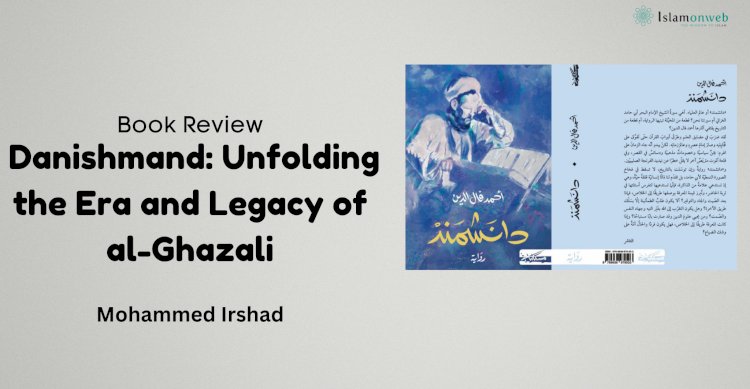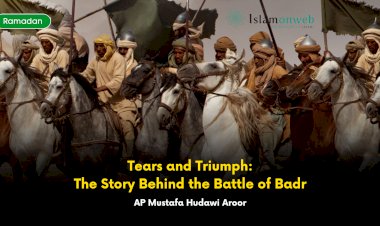Ahmad Fal al-Din’s Danishmand: Unfolding the Era and Legacy of Imam al-Ghazali
When reading biographical novels, we often become immersed in the origins of the work, probing into the author's history and prior achievements. This curiosity is heightened when the author is a prominent political or literary figure. However, when the subject matter delves into religion, the reader’s concerns expand, mixing enjoyment of the narrative with the need to discern the boundary between fact and fiction. Ultimately, what stands out most are the unique experiences of the individual shaped by their era.
"DANISHMAND" is an intriguing title chosen by the author, Ahmed Fal al-Din, a Mauritanian writer, to draw in his audience. "DANISHMAND, a non-Arabic term, and its Persian roots translate to "the scholar of scholars," symbolising deep knowledge and erudition. The novel centres on the life of Abu Hamid al-Ghazali, a towering figure in Islamic thought, known for his contributions as both a philosopher and a Sufi.
With this distinctive title, the author begins the story by adopting a fresh approach, opening the novel with a theme of 'second birth,' sparking a series of questions in the reader's mind. What was the 'first birth'? Why highlight the second? What significance does entering Damascus hold at this moment? These questions swirl in your thoughts within the first four pages, mirroring the inner turbulence that Imam Ghazali himself experienced as he stood on the threshold of Damascus, seeking self-discovery and striving to peel back the layers of time.
“How many years have been tied to his heart, waiting to open? What barriers on the earth keep me from reaching the hearts of others? For how long has he convinced himself to walk toward the bountiful and the most exalted?”
This was the moment of departure, leaving behind a world steeped in pride and turning toward realms of poverty, compassion, humility, and modesty. It was the desire to disappear from the sight of all in pursuit of connection with the One, Allah.
After starting at 40, the narrative takes us back to the childhood that shaped Imam Ghazali’s life. We are led through chapters that span the lands of Khorasan, from learning and teaching in the streets of Neyshabur to the grandeur of Baghdad’s palaces intertwined with the courts of rulers and sultans.
Historical Novel or Subjective Experience?
In this novel, the author masterfully navigates two primary trajectories: the first traces Imam Al-Ghazali’s doctrinal and intellectual evolution, while the second explores the tumultuous power struggles of his era, a time fraught with risks and conflicts. The narrative transports us through significant milestones in the history of the Muslim community, unfolding episodically as it moves from Baghdad to Damascus and then to Jerusalem, reflecting not only the physical distances traversed by Ghazali but also his spiritual journey.
It is no surprise that reading about the illustrious career of this renowned jurist—marked by suspicion, certainty, and intellectual production—is captivating. Yet, what makes the novel truly thrilling is how the author breathes life into these events and thoughts through a rich, debate-driven narrative. The pacing keeps the reader engaged, compelling one to continue until even the most diligent follower is overcome by exhaustion.
The author skilfully immerses us in Imam Al-Ghazali’s world, employing subjective narration as the dominant style. This makes the inner voice of the protagonist a driving force of the plot, allowing us not merely to read about the man but to experience his internal and external struggles firsthand. The Imam’s preoccupations lay bare his anxiety and restlessness, especially during sleepless nights haunted by the torment of his doubts, mirroring the religious debates of his time. He mourns his isolation in Viavi, far from home, longing to return, even if delayed. His regrets are palpable as he recalls not being able to comfort his daughters and wife after their farewell, knowing his absence would be prolonged. Through this, the reader is given a rare glimpse into the private life of Imam Al-Ghazali—not just as a scholar but as a husband, father, and ordinary man in search of deeper truths.
Does the novel then imply that it delves deeply into the Imam’s persona, detached from the events, wars, and historical shifts of his era?
The answer gradually reveals itself through the novel’s successive chapters. The narrative shifts seamlessly from portraying Ghazali as a writer traversing the palaces of rulers to the clashing of swords in battles and the whispers of spies in bustling markets. This paints a vivid tapestry of intrigue, warfare, and the reality of life during those times.
Despite the complex nature of the Imam’s life, the surrounding events and variables are far from ignored. Ahmed Fal expertly introduces these elements with a balance of detail and brevity, skillfully intertwining the historical narrative with the human experience. The novel captures significant events that Ghazali either directly participated in or witnessed. As a young scholar, he aspired to gain influence in Baghdad, drawing close to the corridors of power under Nizam al-Mulk, the minister known for promoting Sunni teachings and bolstering their influence. Ghazali’s writings about the Hashashin (Assassins) brought him into conflict with their leader, Hassan Al-Sabah, marking him as a target. His path was a thorny one, unlike that of his predecessors, as he ventured from jurisprudence into philosophy and eventually Sufism, enduring personal losses along the way as he strove to secure a lasting legacy.
Thus, the novel skillfully spans both Ghazali’s internal struggles and the political doctrines that surrounded him. As each chapter unfolds, one sultan falls, another rises, and new doctrines emerge. Throughout all of this, the Imam vacillates between the doubt that haunts him and the certainty that guides him, leaving the reader with growing questions and a deeper understanding of the man caught in the currents of history.
Who was Imam al-Ghazali?
In a compelling narrative, Ahmad Fal-aldhin masterfully blends the spirit of Imam al-Ghazali's era with the sensibilities of our own. He brings to life a time rich with scientific discovery, industrial development, social change, and heated intellectual debate. By weaving this historical backdrop with an intimate portrayal of complex figures like Ghazali, the author delivers a narrative that flows smoothly and captivates the reader, despite the inherent challenges of historical novels. Fal-aldhin’s prior experience with his work Al-Hadaqi, which explores the life of Al-Jahiz, equipped him to skillfully navigate these difficulties, achieving a balance between historical accuracy and reader enjoyment in Danishmand.
Even if you haven't read all of Imam al-Ghazali’s works, the author appears to have done so on your behalf. As you journey through the novel, you encounter significant milestones and writings from Ghazali’s life, including excerpts from his debates with philosophers—those he immersed himself in so deeply that he mastered their teachings, as reflected in his Tahafut al-Falasifa (The Incoherence of the Philosophers).
Ghazali’s profound insights, as expressed in Ihya’ Ulum al-Din (The Revival of the Religious Sciences), resonate far beyond his own time, offering wisdom that speaks to readers even a century later. In his critiques, such as Al-Mankhool, you will see a scholar deeply committed to his faith, grappling with the excesses of esotericism. As a Sufi, Ghazali is portrayed at the gates of the divine kingdom, not merely seeking fleeting moments of certainty but striving for an enduring connection with his Creator.
Amidst these intellectual pursuits, you will also discover a very human side to Ghazali—an ordinary man riddled with doubts, wounded by life's hardships, and restless in his quest for freedom. This is the same man who, as chronicled in his work Al-Munqidh min al-Dalal (The Deliverance from Error), interrupted his livelihood and distanced himself from his family in a desperate search for fragments of his lost self.
In this portrayal, Fal-aldhin gives us not just a towering scholar of Islamic thought but a deeply human figure—one who experienced the full spectrum of human emotions, from doubt and despair to enlightenment and spiritual fulfillment.
As you navigate through these intellectual and psychological phases, you may only grasp a portion of what you encounter independently. It would be beneficial to explore Imam al-Ghazali’s letters to a student, found in the book Oh Boy (أيها الولد). In one such letter, Ghazali reflects:
“Did God consent to unite the legacy of Al-Huwaini with the inheritance of the Farmadi after all this journey, and did God guide me to achieve that noble endeavor: reconciliation in the science of religion between theology and jurisprudence, between logic, philosophy, and Hadith?”
When you hold the novel in your hands, its physical weight is tangible, but upon finishing, you become more aware of the weight of its ideas. These ideas oscillate between complete enjoyment and the desire to engage with the text more thoughtfully and deliberately. After a curious first reading, you are compelled to embark on a second, deeper journey. This deeper dive reveals stories that span centuries, condensed into the pages before you, each with a profound impact on your thoughts and perceptions.
At over 700 pages, the novel transports you through the many worlds of Imam al-Ghazali, prompting reflection on your own existence. Do we truly understand ourselves, or is there a need to delve deeper, beyond the fleeting moments, to comprehend the greater purpose for which we were created? Through Ghazali’s journey, the reader is invited to confront these questions and reflect on the deeper meanings of life, faith, and intellectual pursuit.
About the author:
Mohammed Irshad is a Research Assistant at the Doha Institute for Graduate Studies in Qatar.
Disclaimer
The views expressed in this article are the author’s own and do not necessarily mirror Islamonweb’s editorial stance.
























Leave A Comment